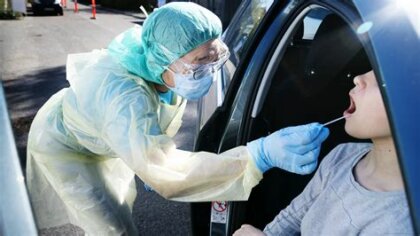County COVID plan aims to reach low-income, Latinx communities
 Sonoma County has launched an ambitious program to slow the spread of coronavirus among the most vulnerable — low-income, essential worker and Latinx communities.
Sonoma County has launched an ambitious program to slow the spread of coronavirus among the most vulnerable — low-income, essential worker and Latinx communities.
The County remains at the state’s most restricted, high-case level, and the 95476 zip code is among the hardest hit.
The plan calls for a total $15 million investment in increased testing opportunities, enhanced outreach to the Latinx community, and financial assistance for those who are COVID-19 positive and need to quarantine. An initial $4 million, to fund the program through this year, was approved Tuesday.
The root problem, said Susan Gorin, chair of the Board of Supervisors, “is the unequal access to health and economic resources that limits the ability of many residents to effectively protect their health and that of their families.”
The County and state use the Healthy Places Index (HPI) as a standard. Recent data shows that the overall testing-positivity rate for Sonoma County is 5.1%, while the census tracts where residents have access to the fewest socioeconomic resources remains at 7.5%. There is one such tract in the Sonoma Valley, in the Springs area east of Highway 12. See this map.
The County plan addresses that disparity, Gorin said.
Residents of these tracts are more likely to be an essential worker living on limited income who cannot afford to miss work for testing, or isolation, or quarantine, and they lack sick leave or job security to take time off when sick. Within these areas, residents are more likely to live in a shared space due to lack of affordable housing and lack health care access.
Testing
The County of Sonoma will double the number of pop-up test sites to serve neighborhoods that fall into the lowest 25% of the HPI census tracts. Testing appointments for these pop-up locations as well as other locations including Empire College, at 3035 Cleveland Ave. in Santa Rosa, and Alliance Medical Center at 1381 University Ave. in Healdsburg, are available by calling 707.565.4667.
Latinx outreach
In order to ensure culturally-sensitive communications with trusted messengers, the County has contracted with On the Move to implement large-scale outreach and education campaigns to the Latinx and indigenous communities.
The effort will connect with farmworkers, local laborers, and other Latinx and indigenous language-speaking communities to connect individuals to medical supportive services, testing events, and emergency financial assistance
Financial assistance and incentives
Residents who are living on limited income and cannot afford to miss work are less likely to access testing or have the ability to isolate or quarantine. To incentivize residents to take part in testing, the County will offer gift cards to help offset costs such as lost wages or transportation.
The testing incentive gift cards will be offered only at testing sites in census tracts that are in the lowest 25 percent of the HPI and will be limited to one per month. The County predicts a 50% to 75% increase in testing demand in target groups based on data from counties with similar incentives.
Additionally, financial assistance will help low-income individuals afford to isolate when they are COVID-19 positive. Residents of the census tracts that are in the lowest 25 percent of the HPI who lack access to paid leave or other compensation will also be offered financial support including lost wage replacement of $1,216 for a 14-day isolation period. The amount was determined using Santa Rosa’s minimum wage rate of $15.20/hour. Wage replacement will be available to those working 40 hours a week for a maximum of 80 hours of missed work for 14 days.
Isolation and quarantine support
The County will improve a resident’s ability to effectively isolate, as it is a critical component of limiting the spread of COVID-19. This includes securing additional hotel space for isolation closer to the targeted census tracts, and providing a gift card incentive to individuals who isolate at the Alternate Care Site or these additional locations.
The County will provide mobile medical services and additional wrap-around services such as medication delivery, meal/grocery, and laundry services to individuals who choose to isolate at the ACS or other safe sites.
Expanded communication campaign
To promote these new strategies, the County’s Strategic Communications Unit is proposing a robust Education and Marketing Campaign targeting residents within those priority census tracts. The goal of the plan is to increase participation in testing and utilization of isolation and quarantine resources through a multi-platform campaign including radio, streaming services, print and television ads in Spanish and English in addition to supermarket videos, social media messaging, and geo-targeted digital advertising.
The Board of Supervisors unanimously approved the strategies and $4 million in CARES Act funding for initial activities through Dec. 31, with an additional $11.9 million request for the programs from Dec. 31, 2020, through June 30, 2021.
“I’m optimistic that these strategies will provide the resources where they are needed most and, in the end, will benefit the entire community,” Gorin said.
Residents can find out whether they live within the targeted census tracts by going to this map that is now available on the SoCoEmergency.org website. The map includes a search window where users can input their address to find out if they reside in a targeted census tract and are therefore eligible for financial assistance.



